
This post contains affiliate links. Read my Disclosure Policy for more information. Thanks for your support!
I call this symbol system the lingua franca of crochet because it allows crochet designers from different language backgrounds to create patterns that everyone can read.
I couldn’t find much on the origins of these symbols other than that the Japanese invented their system (apparently some European countries use a different symbol set) “in the 1960s or earlier” (1) and that their symbols have been standardized by the government in the Textile Engineering Division (L) of the Japan Industrial Standards (2).
US crochet patterns use the Japanese symbols, and the Japanese symbols follow the US system of designating crochet stitches.
An Easy Crochet Wallet Pattern
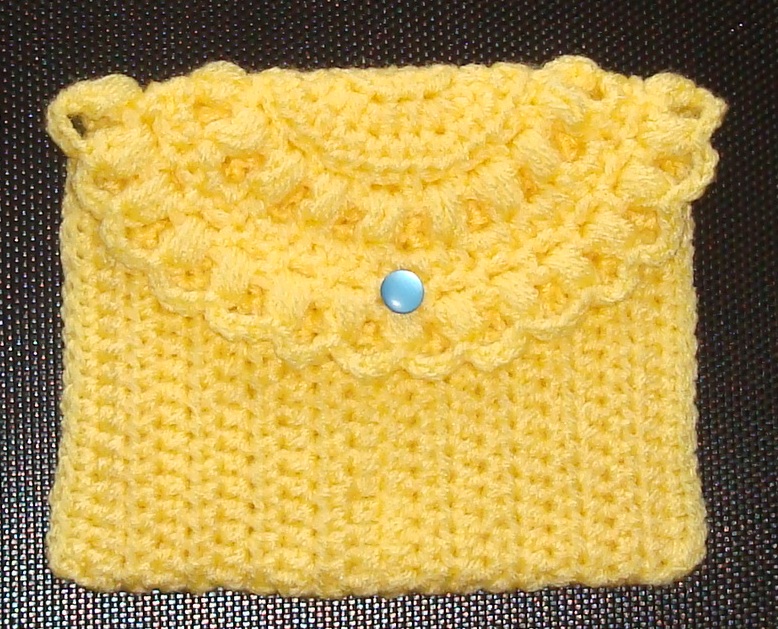
To give you an idea of how easy these charts are to follow, I decided to crochet this wallet after coming across a video and pattern on Google+ . The designer is Esperanza Rosas, and her video is in Spanish. Without the chart, it would have been a challenge for me to follow along since I don’t speak the language.
The other great thing about this pattern is that Ms. Rosas includes a photo tutorial as an additional aid in understanding it. If you open the site in Google Chrome, it will translate the Spanish to English. It’s not the best translation in the world, but it does help.
Some Tips to Help You Understand the Chart
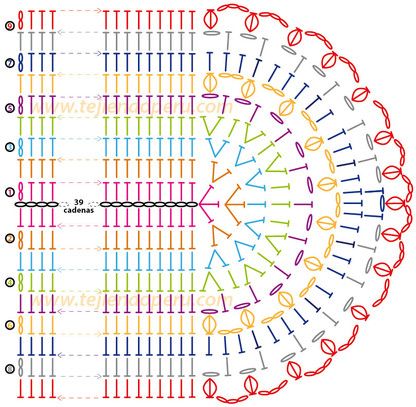
These tips should give you a head start in understanding how to crochet the wallet.
- The wallet is crocheted in “half rounds” (I’m calling them rows after this), starting in the middle of the piece with a foundation chain of 39 chains (cadenas).
- Each row begins with a chain 2, representing the first half double crochet stitch; so you always know where the beginning of the row is.
- You start by crocheting down one side of the chain, work the flap stitches as directed, then crochet down the opposite side of the chain. At the end of the row, you chain 2 and turn to start the next row. The wallet expands from the center out. Each row is a different color, so you should have no problems following them.
- To turn the wallet into a purse, simply add more chains to the foundation chain; the body will be longer, but the width of the piece and the flap remain the same.
The one thing you don’t know unless you understand Spanish is what yarn weight and hook size to use. I used worsted weigh (4) yarn and a G/4 mm hook for this wallet, and it came out rather large (5″ x 6.5″). Next time, I’ll use a lighter weight yarn and a smaller hook. And I will probably line the finished piece. It will make a nice cell phone cozy.
Here’s what my wallet looked like before I folded it and single crocheted the sides.
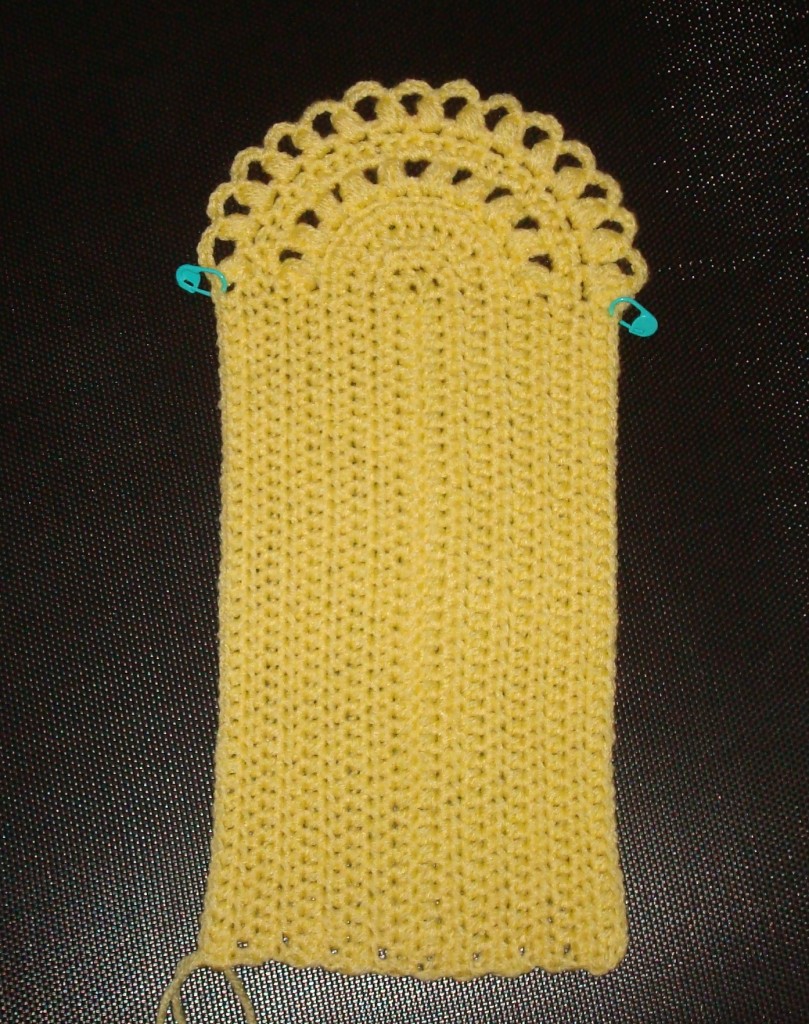
The stitch markers separate the wallet body from the flap, so I always knew where the body stopped and the flap began.
reading Japanese Patterns Is a Little More Challenging
I’m working on another crochet pattern, using symbol charts that are part of a Japanese pattern. I’ve had to join a Facebook group to learn how to read this pattern as Japanese patterns are created a lot differently than US patterns. For one thing, they use as few words as possible; most of the pattern information is in the symbol charts and the schematic diagrams.
And unlike US patterns, Japanese patterns include some crochet information in the schematic diagrams. I’m only about half way done with this lovely tunic. When I complete it, I’ll add a photo to this blog post.
UPDATE – 5-31-14
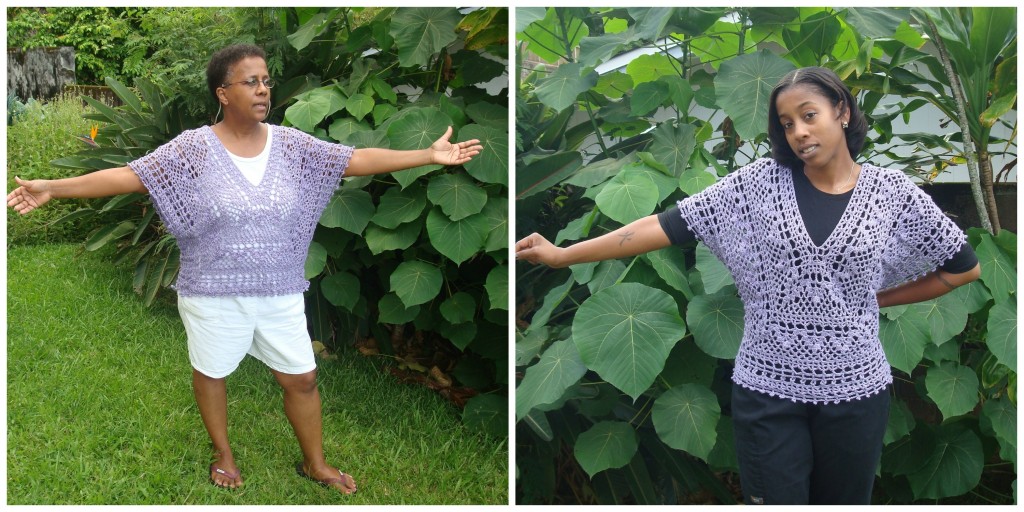
I finally finished the tunic. It’s a little too big and the yarn I used, Patons Beehive Baby Soft Sport, is way too stretchy. Next time I’ll use a lighter-weight cotton or a cotton blend. My daughter cinched the waist in the back to show how a more fitted silhouette would look.
Japanese Pattern and Crochet Symbol Chart Resources
I have found a couple of English-speaking websites that explain how to read Japanese patterns that you might find helpful:
Pierrot Yarns, a Japanese yarn company, has a nice collection of Japanese patterns that are in English!
The Craft Yarn Council has created a list of crochet symbols that you will find in Japanese and US symbol charts. And CraftyMinx.com has a great series of lessons on reading symbol charts.
And if you really want to get into the nitty gritty of reading crochet symbol charts, check out Charles Voth’s “See It, Crochet It: Reading Diagrams” class on Craftsy.
Now that you know a little bit more about symbol charts, do you think you’ll try one?

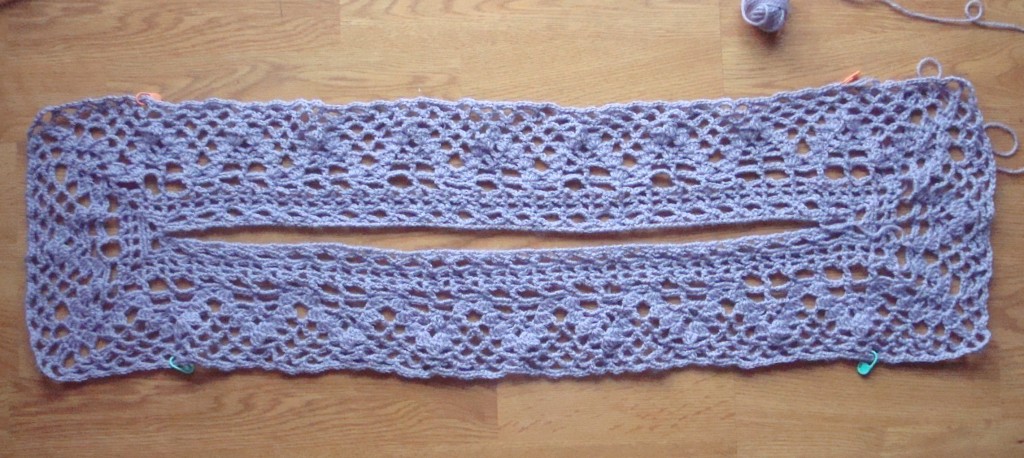



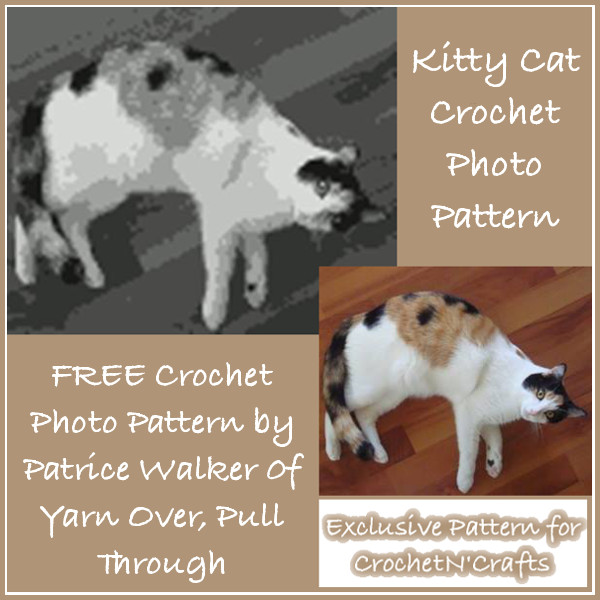
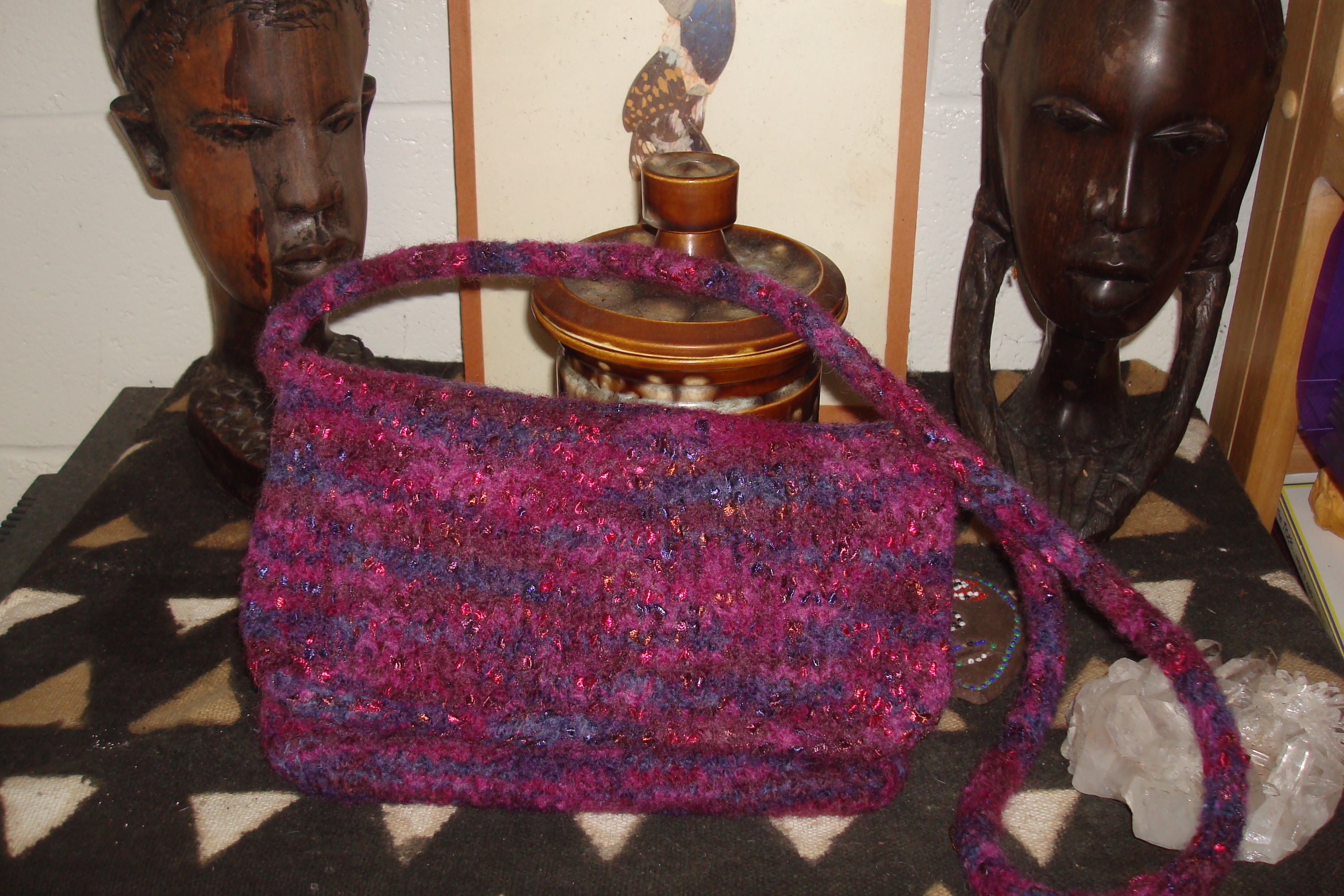
10 comments On Crochet Symbol Charts Are Easier to Follow Than You Might Think
Hi there!
I am happy with this charts idea.
I follow them much better than written instructions and would appreciate if you could
publish booties, dresses, clothes for baby girl.
thank you very much.
Chiquina
Hi Chiquina, yes, charts are sometimes a lot easier to follow than written instructions. I don’t have plans to publish those patterns or symbol charts at the present time. I did a quick google search using the terms “crochet symbol chart for girls clothes” and came up with this site – http://indulgy.com/post/256JBRZ152/idea-chart-pattern-crochet-dress-for-girl. That will get you off to a good start. Thanks so much for taking the time to read and comment.
That wallet is lovely. I must confess that I don’t use charts nearly as much as I could. Maybe I should follow your lead and just do it 🙂
Yes Dedri, that’s what I did, just jumped in there and did it. I’m looking forward to making another wallet soon. Let me know how it goes if you try a chart. And thanks so much for stopping by and commenting 🙂
Hi, very very beautiful pattern ,Thank you so much
Hi Kafi, yes Esperanza’s pattern creates a lovely wallet. Glad you like it. Thanks for stopping by and commenting!
I need your inspiration to reading charts. Thanks for the great explanations!
You’re welcome, Gigi! Glad I could inspire you 🙂
Pingback: More Crochet Photo Pattern Tips and Tricks | Yarn Over, Pull Through ()
Pingback: More Crochet Photo Pattern Tips and Tricks | Yarn Over, Pull Through ()
Sliding Sidebar
Categories
Privacy Overview